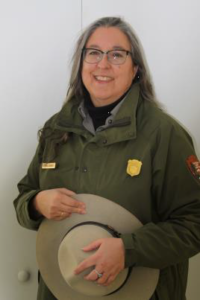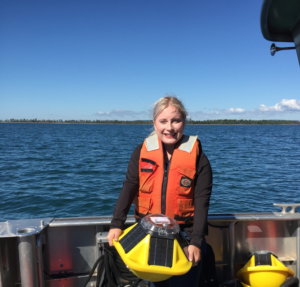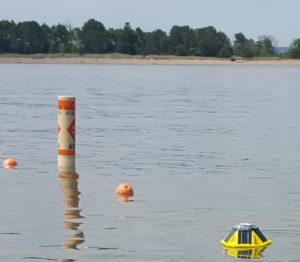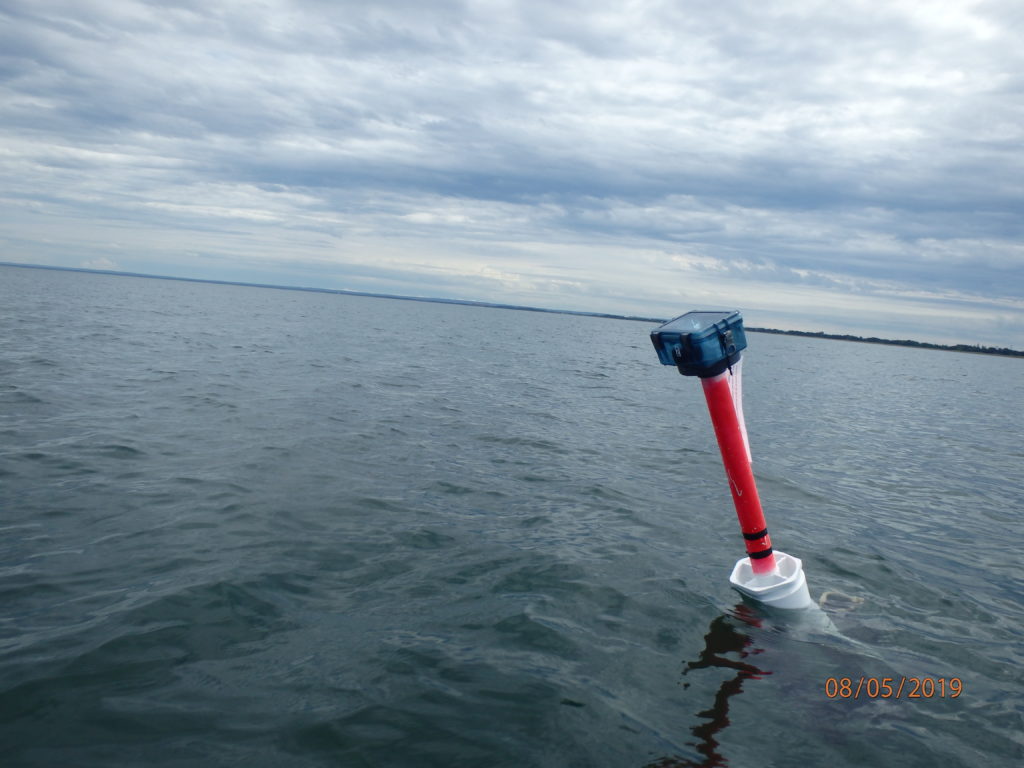Project tackles broken coastlines by strengthening community relationships on Lake Michigan
It’s not often that a Sea Grant research project proposal contains the word “forgiveness.” However, that’s one of the missions of a multi-Sea-Grant-program endeavor taking place in three communities along the Lake Michigan coast.
Record-high water levels, severe storm surges and shoreline armoring have caused significant erosion to the bluffs and beaches in many areas along the 1,460-mile Lake Michigan shoreline. The ground beneath houses and garages on the shore is washing away, causing some structures to topple into the lake.
Along with this physical breakage comes emotional breakage, with neighbors blaming neighbors and community organizations for these problems.
Project lead Chin Wu, a professor of civil and environmental engineering at the University of Wisconsin-Madison, said he is working to strengthen broken relationships and soothe anxiety. For example, tensions have run high in Mequon, Wisconsin, following Concordia University’s 2008 bluff stabilization project, including a lawsuit against the school brought by neighbors.
“There are people mad about every different aspect [of erosion],” Wu said. “But instead of blaming each other when natural forces take place, it’s the high-water levels that we need to cope with.”
The two-year joint project that began in 2020 is co-led by Wu, Guy Meadows with Michigan Technological University and Cary Troy with Purdue University. With funding by Sea Grant programs in Illinois-Indiana, Michigan and Wisconsin, the project seeks to address complex erosion issues through an integrated physical, social and community approach.
Although their joint project has the capacity to impact the whole of the lake and lakeshore communities, the research team is concentrating on three locations that are all experiencing erosion: Mequon, Wisconsin; the dunes at Beverly Shores, Indiana; and the shoreline of South Haven, Michigan.
For the physical aspect, they are working to identify coastal areas with high erosion potential, characterize areas where sediment is trapped or diverted by using historical aerial photos, and compile an inventory of coastal sediment budgets in Lake Michigan – how much sediment is coming into the lake, how much is going out, and how much is being stored. The team will also assess the cumulative impacts of shoreline protection structures through historical aerial images and different computer model scenarios of varying lake levels and storm events.
For the social aspect, the team will assess public attitudes and perceptions about different shore protection options and examine variables that affect community relationships.
For the community aspect, the team will develop a community of practice to guide decision-making for what coastal stabilization measures to use and communicate the information learned through the project back to the communities. A community of practice is a group of people who share a common concern, a set of problems, or an interest in a topic and who come together to fulfill both individual and group goals.
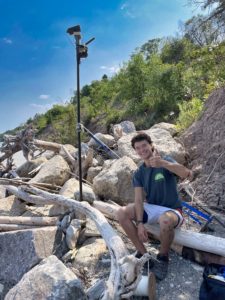
Ph.D. student, Miles Tryon-Petith, installs a real-time camera to track erosion on the Lake Michigan shoreline in Mequon, Wisconsin. Submitted photo.
Miles Tryon-Petith, Wu’s civil and environmental engineering Ph.D. student from UW-Madison, said the community of practice will include local and regional organizations, such as the Department of Natural Resources as well as community leaders.
The forgiveness aspect of the project enters with factors that affect community relationships. Robert Enright, psychology professor, and his Ph.D. student, Lai Wong, at UW-Madison will employ social justice circles, a scientifically verified program that works to address issues about which people feel strongly. This method convenes opposing parties in a dialogue with the goals of fostering understanding and mutual problem-solving.
“Developing strong community relationships and introducing the social justice circles seemed very important because people’s homes and livelihoods are threatened by this ongoing problem. These are people living through the situation,” said Tryon-Petith.
The hope is that after working through the understanding and forgiveness exercises, communities can move on to discussing erosion-control solutions.
Wu emphasized that solutions lie with shoreline protection structures that employ engineering principles, which work with natural processes. He calls these nature-based solutions. These may include features that are completely natural, such as planting native vegetation on dunes, and those that are “hard,” such as concrete structures like seawalls. Multiple types of nature-based features are often combined within a project. Wu said the features would also be attractive to wildlife.
Adam Bechle, coastal engineering outreach specialist for Wisconsin Sea Grant and project team member, said, “There is growing interest in nature-based shorelines in the Great Lakes. We are eager to explore what types of these features can work at these sites and hopefully bolster their use in the region.”
Tryon-Petith said the project team met recently with community members in Mequon and Concordia University. “People were excited about moving forward – about what they could do or how we could work with each other, rather than lingering on what happened in the past. So, I’m optimistic about that.”
The goal of this project is not to actually build erosion-control structures but to identify which ones would work in different locations along the lake. Then, communities could seek funding for building them and implementing other erosion control measures.
“The dream is that we’re able to approach changing shorelines better,” said Tryon-Petith. “Erosion is such a behemoth of an issue. I’m starting to feel very excited working to find ways to tackle shoreline erosion around the lake. It’s not going to be the same solution everywhere . . . It’s very special to work on this issue with colleagues from Michigan and Illinois-Indiana. You can tell this isn’t a chore for them. This is clearly a passion for everyone involved.”
Read more details about the work going on in Illinois, Indiana and Michigan by following the links.
Other project personnel include Todd Breiby and Kate Angel with the Wisconsin Coastal Management Program; Pengfei Xue, Michigan Technological University; Sean Vitousek, United States Geological Survey; Stuart Carlton and Aaron Thompson, Purdue University; Mark Breederland, Michigan Sea Grant; and Sarah Peterson, Boyuan Lu, Yuli Liu and Josh Anderson with the University of Wisconsin-Madison.
Additional funding is being provided by the Michigan Coastal Management Program and a NOAA Coastal Resilience grant.
The post Project tackles broken coastlines by strengthening community relationships on Lake Michigan first appeared on Wisconsin Sea Grant.News Releases | Wisconsin Sea Grant
News Releases | Wisconsin Sea Grant
https://www.seagrant.wisc.edu/news/project-tackles-broken-coastlines-by-strengthening-community-relationships-on-lake-michigan/?utm_source=rss&utm_medium=rss&utm_campaign=project-tackles-broken-coastlines-by-strengthening-community-relationships-on-lake-michigan

